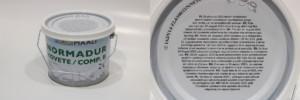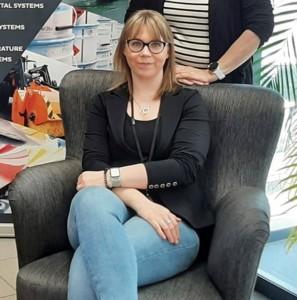2/3/2023
Chemical legislation on industrial coatings is constantly tightening. This means that new obligatory regulations are required for suppliers and workers – reporting and training. The study of the environmental impact of paint products is still voluntary, but makes the company´s business more sustainable. Sirutiina Hakulinen, Nor-Maali’s Product Safety Engineer, tells about two current topics: the future diisocyanate training requirement and the EPD.
A topic that has recently raised questions within the industry is the future training requirements for workers handling diisocyanates and mixtures containing diisocyanates. “The future training requirement originates from the di-isocyanate-REACH regulation, which was published in August 2020. This regulation specifies the requirements for manufacturers e.g. labelling as well as training requirements for industrial and professional workers handling diisocyanates with a concentration greater than 0,1 % by weight”, says Sirutiina Hakulinen.
She tells about the health effects of diisocyanates: Diisocyanates are classified as respiratory and skin sensitizers. Studies show that respiratory sensitization to diisocyanates through both the skin and the respiratory causes workers to have occupational asthma, which is considered to be a significant occupational health problem. The risk to health from sensitization is unacceptable.
“Training for industrial and professional workers, confirmed at EU level, must be completed by 23 August 2023”, she continues. “Future training will provide guidelines on how to prevent exposure to diisocyanates through the skin or respiratory at work. In other words, how products containing diisocyanate are used safely”, tells Sirutiina. There will be three different levels of training, depending on the risk of exposure. The training shall have three modules: general, intermediate and advanced training. The level of training required is based on risk categorization of the tasks that diisocyanate workers perform. Passing the final exam entitles to a certificate of successful completion of the training. Training must be renewed at least every five years.

Nor-Maali’s polyurethane hardeners contain diisocyanate and the training requirement information has been placed on the packaging since 24 February 2022.
“The diisocyanates training matter is currently being prepared at the authority level. As a paint manufacturer, we are also waiting for more information on who can run the trainings and how they should be organized. We will tell more as soon as the information is available”, Sirutiina concludes about diisocyanates.
Another current topic for Nor-Maali are the EPDs, which are used in the construction industry. Sirutiina explains what EPD is: “The EPD (Environmental Product Declaration) is a standardized, voluntary report that objectively explains what a product is made of and how it impacts the environment across its entire life cycle. The EPD provides information on the product’s carbon footprint (Global Warming Potential). In addition to carbon, the EPD contains environmental impacts to air, soil and water bodies.”
Sirutiina continues with the process of publishing EPDs: “The EPD consists of two key documents, a public EPD document and a background report. The public EPD is a summary of the findings of the life cycle analysis (LCA). The background report is used to verify the EPD. Verification is performed by an appointed third party and the publisher of the EPD (in Finland, Rakennustietosäätiö – RTS). This ensures that the data have been verified and found to be reliable sources of environmental information.”
The EPD is usually valid for five years and is generated according to the relevant standards (EN 15804+A2 & ISO 14025 / ISO 21930).
 Sirutiina reminds that EPDs are voluntary, but their use is growing rapidly in the construction industry in line with awareness about environmental impacts. Within the construction industry, EPDs support carbon emission reduction by making it possible to compare the impacts of different materials and products in order to select the most sustainable option. A verified EPD can earn certification credits for green building schemes like BREEAM and LEED. Both public and private stakeholders are increasingly demanding EPDs.
Sirutiina reminds that EPDs are voluntary, but their use is growing rapidly in the construction industry in line with awareness about environmental impacts. Within the construction industry, EPDs support carbon emission reduction by making it possible to compare the impacts of different materials and products in order to select the most sustainable option. A verified EPD can earn certification credits for green building schemes like BREEAM and LEED. Both public and private stakeholders are increasingly demanding EPDs.
“We are preparing EPDs for three different product groups: water-borne products, solvent-based epoxies and solvent-based polyurethanes. Product background information is collected from modules A1 (raw materials), A2 (transport) and A3 (manufacturing). Transport to the customer, customer use and disposal as waste are not included in the calculation”, Sirutiina tells about Nor-Maali’s EPD activities. “The EPDs will be released in early fall”, she concludes.
With the help of EPD environmental statements, Nor-Maali is able to provide even more transparent information on the environmental impact of its products.

Sirutiina Hakulinen, Nor-Maali’s Product Safety Engineer, tells about two current topics: the future diisocyanate training requirement and the EPD.
Sirutiina Hakulinen works at Nor-Maali as a Product Safety Engineer in the HSEQ department. She is responsible e.g. material safety data sheets. In addition, she also works in the Offering & Products department, being responsible for technical data sheets.
Learn more about Sirutiina´s job: https://www.nor-maali.fi/en/story/sirutiina/